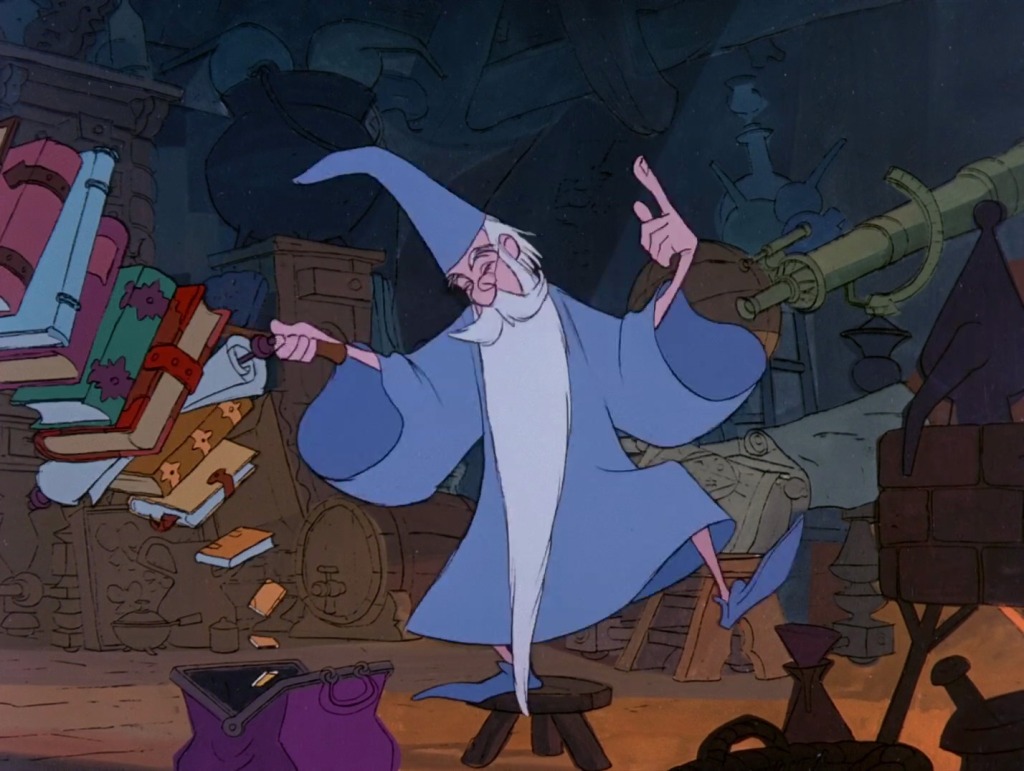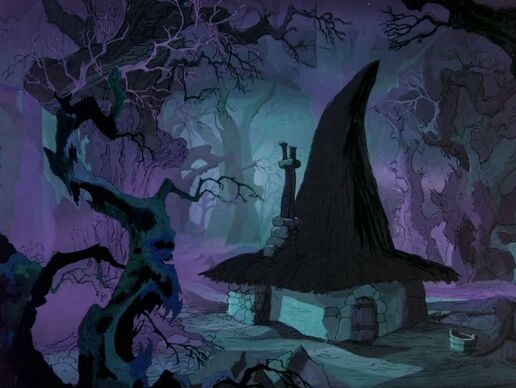The Making of The Sword in the Stone

Released: On Christmas day 1963
Director: Wolfgang Reitherman, one of Disney’s 9 old men. This is one of the only times a Disney film would be directed by just one person. Normally 3,4 or even 5 directors would collaborate together. In fact, Wolfgang was such a good director, he would go on to direct the next 5 films; “The Jungle Book”, “The Aristocats”, “Robin Hood”, “The Many Adventures of Winnie the Pooh” and “The Rescuers”.
Writer: Bill Peet.
Bill Peet started working at Disney back when Snow White was in production and worked on all of the main Disney films in the story department. The Sword in the Stone would be the penultimate film Bill would work on for Disney. Bill would go on to write a version for “The Jungle Book” but Walt Disney and Bill had an argument that resulted in Bill leaving the studio and none of Bill’s ideas being used for “The Jungle Book”.
Original Story:
The novel that “The Sword in the Stone” is based on is called “The Once and Future King” and it was written by T.H. White. Bill Peet, the writer for the film read the book back when it was first published in 1938 and showed Walt Disney the book. Walt obviously loved the story as much as Bill because back in 1939 Walt purchased the rights to turn the book into a film.
Cast
Sebastian Cabot voiced the Narrator at the beginning of the film and Sir Ector. Sebastian would go on to voice Bagheera the panther in “The Jungle Book”.
Karl Swenson voiced Merlin. Karl was a well known radio actor for many years.
Bill Peet was the writer for the film as we already know but Bill also helped to design Merlin. In the book that rge film is based on, Merlin is described as being argumentative but playful. This description of Merlin reminded Bill of his boss, Walt Disney, so he decided to style the character after Walt. Specifically his nose. This is the second time Walt Disney has inspired a character. In the segment “The Sorcerer’s Apprentice” from the film Fantasia, the wizard called Yensid (Disney backwards) is modelled after Walt Disney.

Rickie Sorensen and Richard and Robert Reitherman voiced Wart/Arthur because when Rickie’s voice changed, after going through puberty, they changed the voice actor. You can actually hear, quite obviously that they change the voice actor. Even in some of the same scenes there is more than one voice for Arthur.
Junuis Matthews voiced Archimedes but he was originally given the role of Merlin after Karl Swenson recommended him for the job. Junuis would continue to work for Disney, voicing Rabbit in several Winnie the Pooh films and shorts.
Ginny Tyler voiced the female squirrel.
Martha Wentworth voiced both the old lady squirrel and Madam Mim. Martha also voiced Nanny in 101 Dalmatians.
Norman Alden voiced Sir Kay. Norman would go on to play Lou Caruthers, the cashier working in the diner in Back to the Future.
Alan Napier voiced Sir Pellinore.
Animation
It has been known that Disney will sometimes reuse animation from one film and put it into a new film. This is quite common in the early Disney films, although it is unknown why they do it. Some say it’s cheaper and less expensive, others disagree, either way, in The Sword and the Stone it’s used a lot. The film borrows animation from Bambi, The Adventures of Ichabod and Mr. Toad, 101 Dalmatians, Sleeping Beauty and more. Can you spot which parts of the movies are copied?
It isn’t just scenes that are copied and pasted, characters in The Sword in the Stone were inspired by elements of Sleeping Beauty. For example the character of Archimedes was designed the way he was after the owl that Aurora dances with in the forest before she meets Philip. Also, if you watch the scene were both Madame Mim and Maleficent transform into dragons side by side you will see that the scenes develop practically identically.

The battle between Madame Mim and Merlin has often been referred to as one of the most brilliant examples of animation. The reason for this is that although Merlin and Mim continually change their appearance, the audience can still tell who they are. Walt Disney’s most favourite piece of animation was the scene where Cinderella’s torn outfit is turned into a gown fit for a princess.
Frank Thomas worked on the film, he animated the scene where the lady squirrel falls in love with Arthur when he’s in the form of a squirrel. Frank was so proud of this scene that it was played at his funeral.
Music
Richard and Robert Sherman are probably best known for writing the popular songs of Mary Poppins, including “A Spoonful of Sugar”, “Supercalifragilisticexpialidocious” “Jolly Holiday” and more but did you know that the brothers first Disney animated film was “The Sword in the Stone”. They wrote “The Legend of the Sword in the Stone”. “Higitus Figitus” “That’s What Makes the World Go Round”, “A Most Befuddling Thing” and “The Marvellous Madame Mim”. Two more songs were written for the film but not included. The first was called “The Magic Tree” which was going to focus on Merlin explaining to Arthur the importance of education. You can listen to the song of You Tube and it seems a rather pleasant song. The other is called “Blue Oak” tree and was going to celebrate Kay’s knighthood.
Reception
One of the ways you can tell that this film wasn’t as popular as some of the other films that were released in The Silver Age of Disney is because it’s the only film that hasn’t (as of yet) had a sequel, a TV show or a live action remake all of the other films of the age did. They are: Cinderella, Alice in Wonderland, Peter Pan, Lady and the Tramp, Sleeping Beauty, One Hundred and One Dalmatians and The Jungle Book.
Easter eggs
Next time you watch the film, make sure you take a closer look at Madame Mim’s roof, it’s shaped like a witches hat.

Bits and Bobs
This is one of the last films that Walt Disney worked on. The Sword in the Stone was released in 1963 and Walt Disney sadly passed away in 1966 from lung cancer. The next film to be released was “The Jungle Book” which was released in 1967 which is reportedly the last film Walt worked on. t 5;\ls



You must be logged in to post a comment.